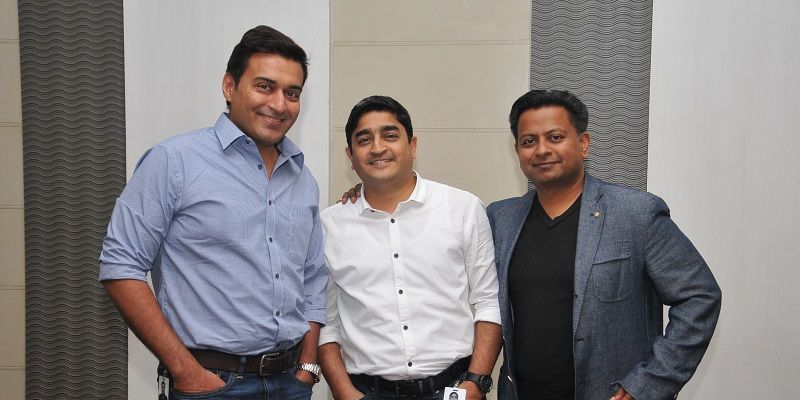What happens inside Uber after you book a cab?
Sindhu Kashyaap

Wednesday May 31, 2017 , 7 min Read
There is a lot that happens behind the scenes after you book a cab. Apurva Dalal, Head of Engineering, Uber India, explains in detail what happens after the two points on the map meet.
It is nine in the morning in Bengaluru. The streets are filled with an equal number of cars, two-wheelers, and buses moving at a snail's pace. If you scan the traffic around you, you will find more cars with the yellow registration plates. They’re all cabs.
This has been the story for a few years now. Ola has been present in India for six years, while Uber has been here for four years. In this time, the aggregators have made booking a cab for everyday travel a large part of our lives.
The mechanism seems simple. Download the app, pick a choice from the categories offered, wait for your ride to arrive and then take off. Yet there is a lot that goes on in the background. Algorithms, and an army of tech teams that work to ensure that everything goes perfectly for you.
What part of the act are you at?
YourStory had the chance to interact with Apurva Dalal, Head of Engineering, Uber India, in Delhi today (May 31). The Uber India engineering team was set up in February last year, in Bengaluru. There is also a small engineering team at Hyderabad. Apurva adds that the engineering teams in India currently comprise of over 100 people.

Drawing parallels from the magic tricks from Christopher Nolan’s The Prestige, we realised that interestingly, every great cab ride consists of three parts or acts. The first part called ‘The Pledge’ in the movie, is called 'The Booking' in the cab world.
Here the app shows you something ordinary: a listing of different cabs. It asks you to inspect their prices and driver ratings to see if it is normal and to your satisfaction. But of course... it probably isn't (surge pricing).
The next part or act is ‘The Turn’. This is when the app takes the moving cab icons on your screen and through complex algorithms makes it do something extraordinary – send a cab to your doorstep.
Now you're looking for the secret. But you won't find it because, of course, you're not really looking. You don't really want to know, you just want to get to your destination. But you wouldn't clap, yet.
Working on different mechanisms simultaneously
This is because making other cab icons on your smartphone screen disappear isn't enough; you have to get a cab to pick up the customer and make them 'magically' appear at their pre-selected destination on the map quickly. That's why every cab ride has a third act, the hardest part, the part we call 'The Prestige'.
And this is where Apurva explains that it works on the demand supply positioning, locations, and mapping. He says,
“From the customer point of view, the idea is to find a ride in the shortest possible time. In today’s world with limited attention spans, nobody wants to wait for their ride to arrive. But primarily, it is the demand and supply that determines how the algorithms work.”
But this isn’t the factor of having a simple algorithm. It comes from several tests that the app runs. More importantly, as Apurva mentions, it is a function of understanding how the demand works and what the customer wants.
“The algorithm learns from patterns of behaviour, rider preferences, the timing of the day and kind of ride preferences. We work along both individual rider perspectives and a broad preference understanding,” explains Apurva.
Keeping it simple
Citing an example, Apurva says for a city like Bengaluru, the algorithms of the San Francisco-based cab aggregator knows the hotspots or frequently-visited areas.
On the driver’s side, the algorithms work on the number of trips each driver takes during the day, hours that are spent, which areas they work out of and then there is the angle of mapping and routing. The timings are then given depending on the driver’s location and customer location.
The work along the algorithms mostly happens in real-time. Apurva adds that the app simultaneously also works on ensuring transparency so that the rider can see the number of cars available on the platform. He adds,
“The Uber app has essentially evolved with time to suit the needs of the market. In India, specifically, we need to make sure that the app works along low network connectivity.”
This works best in the ideal case scenarios, but what about when there are several riders trying to book a ride at the same time? Or more commonly known as peak times. Apurva adds that while the basics remain the same, the idea is to get the algorithms to be strong enough to take the loads.
Learnings and the changes it brings
“Since our algorithms are constantly learning, with time we want to be able to show what the top rides from your history are, prompt destinations based on your preferences and make the process faster and seamless,” says Apurva.
However, the past few months have been difficult for Uber. Apart from the controversies, one of the biggest protests seen is the drop in driver incentives. While an India specific problem, this issue seems to be a concern for drivers across the globe. Also, one of the biggest concerns seen on the customer front is the different pricing models that different customers get.
While Apurva denied that they are charging customers based on gender, operating systems, and battery life, he confirmed that the team is definitely experimenting with different pricing models.
It’s all in the price
India, he adds, works along the lines of a largely marketplace driven model of demand and supply. Factors like the time of the day, the area where you’re trying to book a cab from, and the kind of product one is trying to book, make a lot of difference.
An article in the Bloomberg said that the new fare is currently working and experimenting with the ‘route-based pricing model.’
For India specifically, Apurva adds that they are now focussed on onboarding as many drivers as possible. “The focus is on leveraging the community as a whole, as drivers are a close-knit team and one brings in the other,” says Apurva.
For that, the team works towards tracking the rides, helping the driver at every step, nudging them and encouraging them when need be. “We give them feedback in the form of notifications on the app,” adds Apurva.
The team is also experimenting with IoT and sensors to enable the driver better. The idea is to build an ecosystem around the vehicle, which in turn will help the driver.
The experience that matters
Today, however, the market is different and diverse. The Indian consumer becoming discerning. The past year was a battleground of sorts. Ola, which still retains close to 60 percent of the market share, fought to retain that share. And while many were wondering how Ola would maintain its edge, it launched Ola Play and Ola Select.
Pricing works only up to a point, and can’t be a differentiator alone. There needs to be a more sustainable and stickier value proposition to users to keep them engaged and loyal.
Ola Play is a good example, where Ola has tried to move the user’s choice from a paradigm of just pricing and getting from point A to point B, to changing the entire user experience.
While Uber has tied up with Spotify in the US, is it planning to launch or experiment with something similar? Apurva adds that while Uber has been focussed on building a strong tech backend, they are also looking at the user experience during the ride closely.
“We are experimenting with a few things to engage the user during the ride, but we cannot reveal anything at the moment,” adds Apurva.
(With inputs from Harshith Mallya)







![[Funding alert] Wonderchef raises Rs 150 Cr led by Sixth Sense Ventures](https://images.yourstory.com/cs/2/b87effd06a6611e9ad333f8a4777438f/funding-1630344931171-1636700432294.png)


